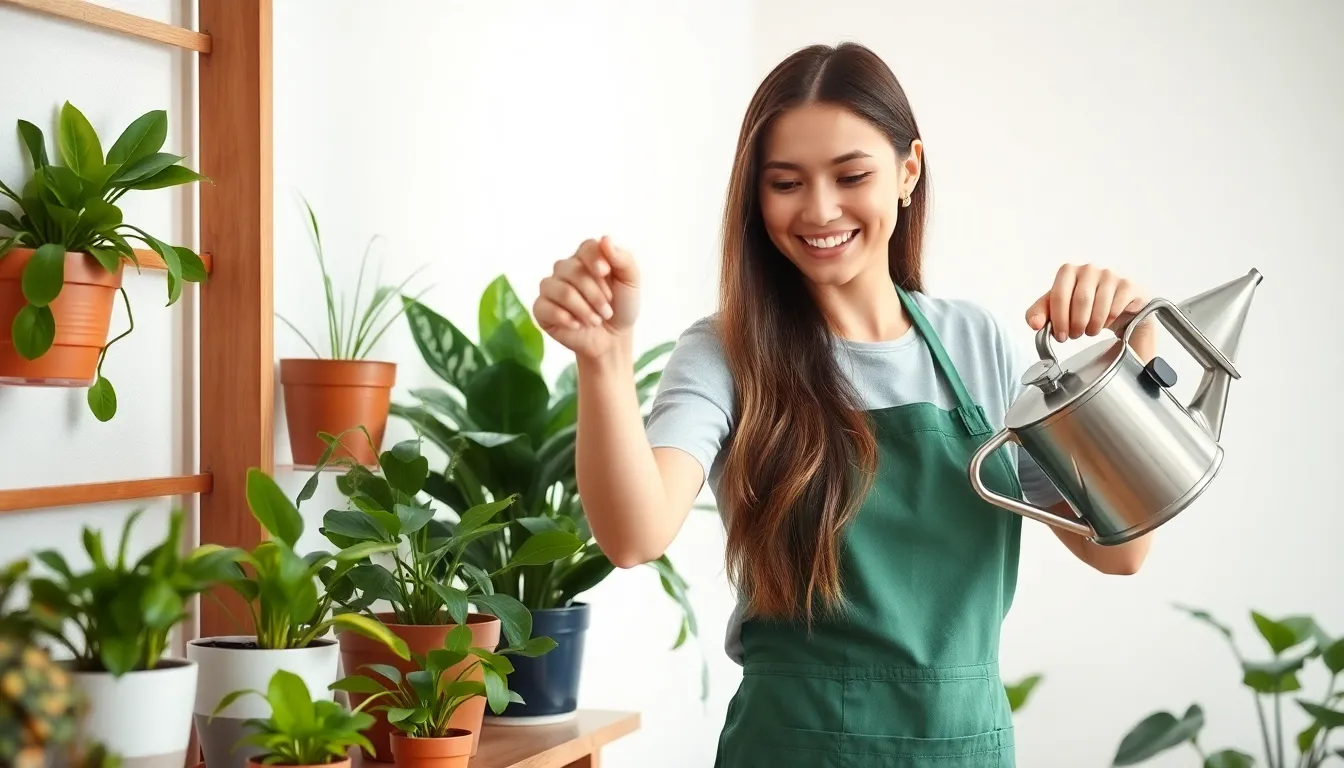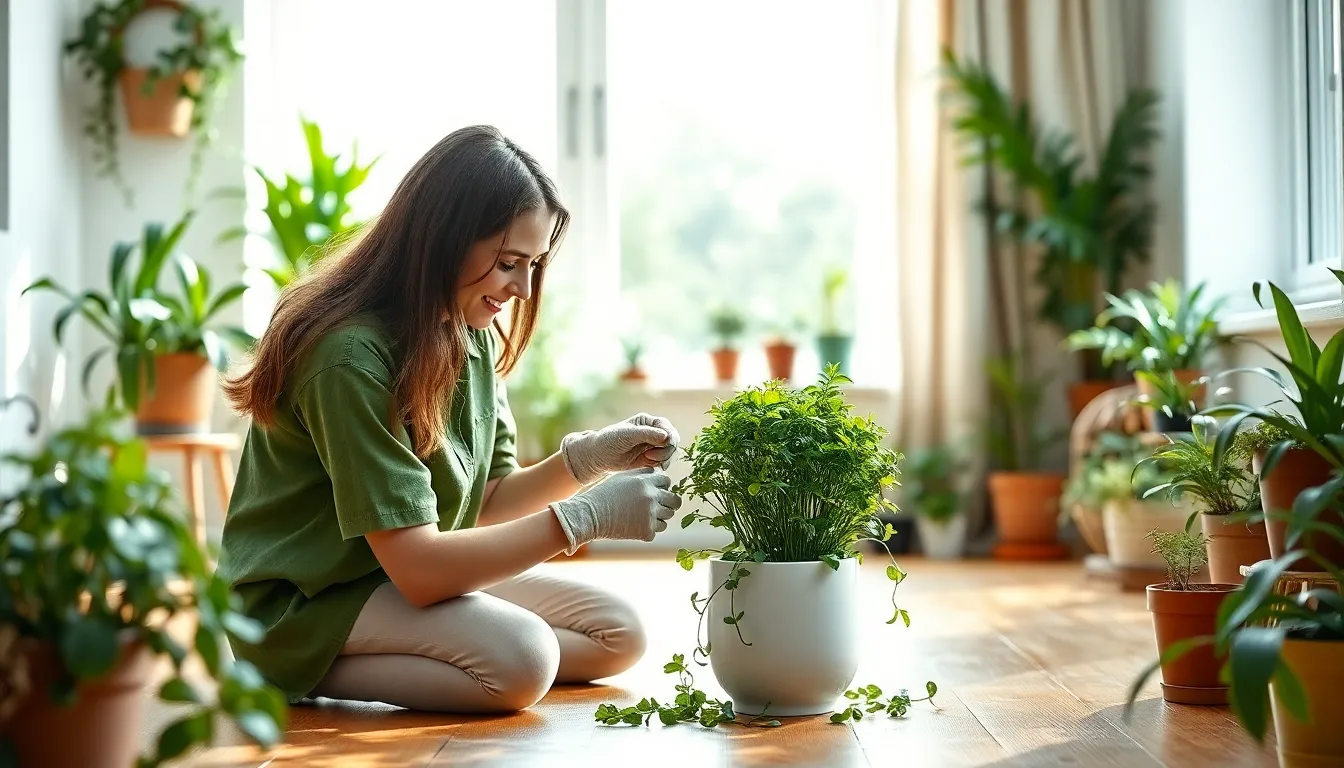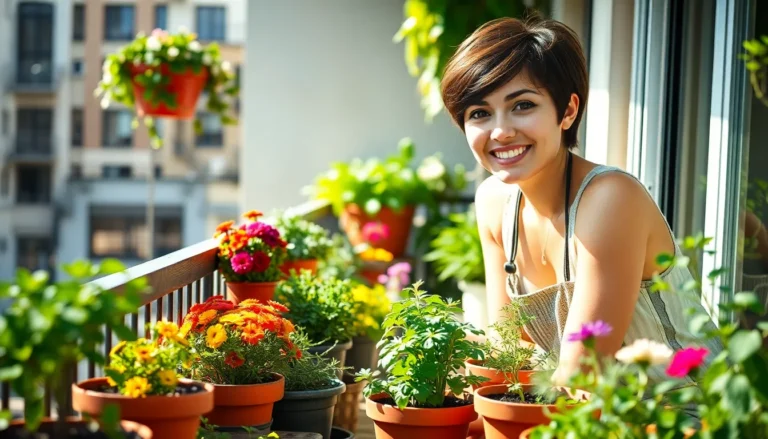Imagine transforming your living room into a lush oasis without ever stepping outside. Indoor gardening offers a delightful escape from the hustle and bustle of daily life, and it’s easier than you might think. Whether you’re a seasoned plant whisperer or someone who can barely keep a cactus alive, this guide is for you.
indoor gardening for beginners
Indoor gardening offers a rewarding way to enhance living spaces. Beginners can easily embark on this journey by understanding key elements.
Choosing the Right Plants
Select plants based on available light and space. Low-light options like pothos or snake plants thrive in dim conditions. Herbs such as basil and mint grow well near sunny windows. Consider plant size and growth habits, as some plants expand significantly. Seasonal considerations influence plant picking; certain varieties prefer winter while others excel in summer. Researching plant needs helps prevent common pitfalls.
Essential Tools and Supplies
Obtain basic tools to simplify indoor gardening tasks. Trowels and pruners facilitate planting and maintenance. Containers with drainage holes promote healthy root systems. Quality soil promotes growth; choose potting mixes designed for indoor plants. Watering cans with narrow spouts allow for precise watering. Fertilizers provide essential nutrients, supporting plant health throughout their growth cycles. A moisture meter can help gauge water needs accurately.
Understanding Indoor Plant Care

Indoor gardening requires knowledge of essential care techniques to ensure plant health. Proper watering and light management play critical roles in nurturing indoor plants.
Watering Techniques
Watering contributes significantly to plant vitality. Begin by checking soil moisture before watering. Overwatering leads to root rot, while underwatering can cause wilting. Different plants have varying needs; succulents need less frequent watering compared to tropical plants. Use containers with drainage holes to prevent excess water accumulation. Water until it drains out of the bottom, ensuring roots absorb enough moisture. A moisture meter proves useful, providing an accurate reading of soil hydration levels.
Light Requirements
Light serves as the foundation for plant growth. Assess the available light in your space, considering both natural and artificial options. Low-light plants like snake plants and pothos thrive in dim conditions. Conversely, flowering plants such as African violets favor bright, indirect light. Rotate plants regularly for uniform growth and avoid placing them too close to windows to prevent leaf burn from direct sunlight. Supplemental grow lights offer a solution when natural light is insufficient, particularly in winter months.
Creating the Perfect Indoor Environment
Creating an optimal environment is crucial for indoor gardening success. Many factors contribute to plant health, including temperature, humidity, soil, and fertilization.
Ideal Temperature and Humidity
Ideal temperature ranges for most indoor plants fall between 65°F and 75°F. Most plants thrive when temperatures remain consistent. Humidity levels should ideally hover between 40% and 60%. Herbs like basil, which prefer higher humidity, may benefit from a humidity tray. Adjusting the environment can enhance growth significantly. Consider using a hygrometer to measure humidity accurately. Placing plants near water sources or using a humidifier helps in dry conditions. Fluctuations in temperature or humidity may stress plants.
Soil and Fertilization
Quality soil serves as a foundational element for indoor gardening. A well-draining potting mix, specifically designed for indoor plants, promotes healthy root systems. Organic matter, such as peat moss or compost, enriches the soil with nutrients. Fertilization should align with plant growth stages. Using a balanced liquid fertilizer every 4 to 6 weeks supports vibrant growth during the growing season. It’s essential to follow package instructions for proper dosage. Too much fertilizer might burn plant roots, while too little leads to nutrient deficiencies. Regularly replenishing nutrients ensures robust indoor plants.
Common Indoor Gardening Challenges
Indoor gardening comes with unique challenges that beginners often face. Understanding these obstacles can lead to a more successful gardening experience.
Pests and Diseases
Pests can wreak havoc on indoor plants. Common intruders like spider mites, aphids, and mealybugs pose serious threats. Regularly inspecting plants for signs of infestation helps catch problems early. Neem oil offers a natural solution for controlling many pests, ensuring plants stay healthy. Additionally, diseases such as root rot may develop from overwatering. Observing the soil and plant leaves for discoloration is vital in preventing disease spread.
Troubleshooting Growth Issues
Growth issues frustrate many new indoor gardeners. Stunted growth often results from inadequate light conditions; evaluating light sources can provide insight into the plant’s needs. Yellowing leaves typically indicate nutrient deficiencies or overwatering. Adjusting the fertilization schedule can address nutrient shortages effectively. Finally, plants may not thrive in extreme temperatures. Maintaining ambient temperatures within the 65°F to 75°F range supports optimal growth conditions.
Conclusion
Indoor gardening offers a fulfilling way to bring nature indoors and enhance living spaces. With the right plants tools and care techniques anyone can cultivate a thriving indoor garden. By understanding light requirements and maintaining optimal conditions beginners can overcome common challenges and enjoy the benefits of their green companions. Embracing this journey not only fosters a connection to nature but also contributes to a healthier home environment. Whether it’s nurturing herbs for cooking or creating a lush indoor oasis the possibilities are endless. So grab some pots and get started on this rewarding adventure today.




